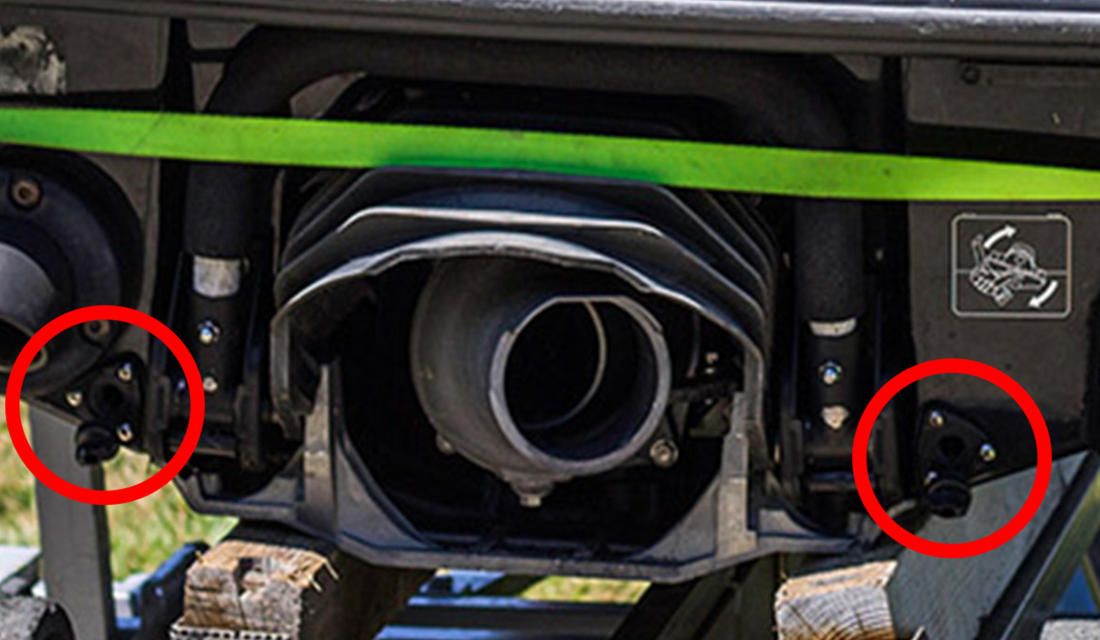
CAN A JETSKI SINK? all you need to know !
Share
Can a Jet Ski Sink? Here’s What You Need to Know!
Picture this: You’re out on the water, ripping through waves, the wind in your face, and the sun shining down. Everything’s perfect—until it’s not. Your jet ski is taking on water, and panic sets in. Can a jet ski actually sink? The short answer is yes—but it’s not as simple as you might think. Let’s dive into how this can happen and, more importantly, how you can prevent it!
Can a Jet Ski Sink?
Technically, most modern jet skis are designed with buoyancy in mind, meaning they won’t fully sink to the bottom like a rock. However, they can become partially submerged or completely inoperable if they take on too much water. Some of the main reasons this can happen include:
-
Hull Damage: Cracks, punctures, or leaks in the hull can allow water to seep in, weighing the ski down.
-
Flipped & Unrecovered: If a jet ski flips and isn’t turned back upright correctly, water can enter the hull.
-
Drain Plug Issues: Forgetting to insert or tighten the drain plugs before launching is a common mistake that can lead to flooding. THIS IS A VERY COMMON ONE SO BE CAREFUL

-
Mechanical Failures: A malfunctioning bilge pump or other engine compartment issue can cause water to collect inside.
-
Overloading: Carrying too much weight (people, gear, or water in the footwells) can cause instability and excessive water intake.
-
Carbon Seal Failure (BRP Sea-Doo Models): The carbon seal is a crucial component that prevents water from entering the engine compartment. If it wears out or fails, your Sea-Doo can start taking on water rapidly.
How to Prevent Your Jet Ski from Sinking
The good news? With some smart habits and a little preparation, you can drastically reduce the chances of your jet ski taking on water.
1. Check Your Drain Plugs Before Every Ride
This is one of the simplest yet most commonly overlooked steps. Before launching, always double-check that your drain plugs are secure.
2. Inspect the Hull for Damage
Regularly inspect the bottom and sides of your jet ski for any cracks, deep scratches, or holes. If you notice damage, get it repaired ASAP to prevent leaks.
3. Know How to Flip It Back Properly
Every jet ski has a specific way it should be turned back over if flipped. Check your owner’s manual and follow the recommended method to avoid getting water into the engine.
4. Don’t Overload Your Jet Ski
Stick to the recommended weight limit, and avoid carrying unnecessary gear that could make your ski unstable.
5. Keep Your Bilge Clean & Consider a Bilge Pump
Some jet skis come with a built-in bilge pump, but if yours doesn’t, adding an aftermarket one can help remove excess water before it becomes a problem.
6. Inspect Your Carbon Seal (Sea-Doo Owners!)
If you own a BRP Sea-Doo, checking the carbon seal regularly is a must. This seal acts as a barrier between the water and your engine, but over time, it can wear out. Signs of a failing carbon seal include excessive water in the hull, a rough idle, or visible wear on the seal itself. To prevent failure:
-
Inspect the carbon seal every season for cracks or wear.
-
Avoid running your ski out of water for long periods, as the seal needs water for cooling.
-
If your Sea-Doo is frequently taking on water, have a professional check the carbon seal immediately.
Protect Your Investment with the Right Accessories
At Dockside Essentials, we know that jet ski ownership comes with its share of challenges, which is why we offer high-quality accessories to make your life easier!
If you want to ride worry-free and keep your ski in peak condition, check out our must-have jet ski accessories at Dockside Essentials!
The Bottom Line
While jet skis are designed to be buoyant, they’re not invincible. Being proactive with maintenance and safety checks can save you from a sinking situation—literally! By following these tips, you’ll spend less time worrying and more time enjoying the water.
Stay safe, stay prepared, and as always—see you on the waves! 🌊
